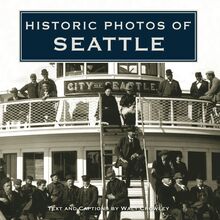Historic Photos of the Siege of Petersburg , livre ebook
203
pages
English
Ebooks
2007
Vous pourrez modifier la taille du texte de cet ouvrage
Obtenez un accès à la bibliothèque pour le consulter en ligne En savoir plus
Découvre YouScribe en t'inscrivant gratuitement
Découvre YouScribe en t'inscrivant gratuitement
203
pages
English
Ebooks
2007
Vous pourrez modifier la taille du texte de cet ouvrage
Obtenez un accès à la bibliothèque pour le consulter en ligne En savoir plus
Publié par
Date de parution
01 août 2007
Nombre de lectures
0
EAN13
9781618586919
Langue
English
Poids de l'ouvrage
7 Mo
The Battle of Petersburg began as an unsuccessful Union assault against the city of Petersburg, Virginia, June 9, 1864, during the American Civil War. Due to the rag-tag group of defenders involved, it is sometimes known as the Battle of Old Men and Young Boys. A series of battles continued around Petersburg from June 15, 1864, to March 15, 1865, when General Lee finally yielded to the overwhelming pressure from General Grant's troops and the cutting off of his supply lines, leading to his retreat and surrender in the Appomattox Campaign.
With approximately 200 photographs, many of which have never been published, this beautiful coffee table book shows dramatic shots of this historical battle in stunning black and white photography and is a must-have for any Civil War buff!
Publié par
Date de parution
01 août 2007
Nombre de lectures
0
EAN13
9781618586919
Langue
English
Poids de l'ouvrage
7 Mo
HISTORIC PHOTOS OF THE SIEGE OF
PETERSBURG
T EXT AND C APTIONS BY E MILY J. AND J OHN S. S ALMON
The paddlewheel medical supply boat Planter lies at anchor at the General Hospital wharf on the Appomattox near City Point, probably early in 1865. The wharf was created from a section of pontoon bridge. A sturdier peer is seen behind the soldiers in the foreground, built on pilings driven into the oozy bed of the river.
HISTORIC PHOTOS OF THE SIEGE OF
PETERSBURG
Turner Publishing Company
200 4th Avenue North Suite 950
Nashville, Tennessee 37219
(615) 255-2665
412 Broadway P.O. Box 3101
Paducah, Kentucky 42002-3101
(270) 443-0121
www.turnerpublishing.com
Historic Photos of the Siege of Petersburg
Copyright 2007 Turner Publishing Company
All rights reserved.
This book or any part thereof may not be reproduced or transmitted in any form or by any means, electronic or mechanical, including photocopying, recording, or by any information storage and retrieval system, without permission in writing from the publisher.
Library of Congress Control Number: 2007929599
ISBN-13: 978-1-59652-392-0
Printed in the United States of America
07 08 09 10 11 12 13 14 15-0 9 8 7 6 5 4 3 2 1
C ONTENTS
A CKNOWLEDGMENTS
P REFACE
B ESIEGING P ETERSBURG
B EHIND U NION L INES
I N THE T RENCHES
F ROM S IEGE L INES TO P ARK
N OTES ON THE P HOTOGRAPHS
B IBLIOGRAPHY
Opposite the Pennsylvania monument, on the other side of the Crater, stands the memorial to Confederate Brigadier General William Mahone, who rushed his brigade into the breach caused by the explosion and stopped the Federal assault through the Crater. His quick and effective action prompted Lee to promote him to major general. Mahone, an engineer, after the war became a railroad company president, mayor of Petersburg, and U.S. senator. The Petersburg Chapter of the United Daughters of the Confederacy erected this monument to Mahone and dedicated it on July 30, 1927.
A CKNOWLEDGMENTS
This volume, Historic Photos of the Siege of Petersburg , is the result of the cooperation and efforts of many individuals and organizations. It is with great thanks that we acknowledge the valuable contribution of the following for their generous support:
Library of Congress
Library of Virginia
We would also like to thank Christopher M. Calkins, Chief of Interpretation, Petersburg National Battlefield, Dale Neighbors, at the Library of Virginia, and Paige Buchbinder, at the Library of Virginia, for valuable contributions and assistance in making this work possible.
P REFACE
The siege of Petersburg from mid June 1864 to April 2-3, 1865, was the product of a bloody series of battles known to historians as the Overland Campaign. Union Lieutenant General Ulysses S. Grant gradually maneuvered General Robert E. Lee, charged with protecting the Confederate capital at Richmond as well as defeating Union armies in the field, into fortified positions near Richmond and Petersburg. The battles began early in May as Grant moved south from winter camps in Culpeper County: Wilderness, Spotsylvania Court House, Yellow Tavern, North Anna River, Totopotomoy Creek, and Cold Harbor. They produced a vast bloodletting, with both sides suffering about 45 percent casualties. Lee could not rebuild his army; Grant, castigated as a butcher in the North, could and did. After Cold Harbor, when Grant slipped away south to the James River, an exasperated Lee said that if Grant reached and crossed the river, It will become a siege, and then it will be a mere question of time. Grant did cross over, and the siege of Richmond and Petersburg soon began.
Lee had to hold Petersburg at all costs. There, rail lines linked the city with western Virginia and eastern North Carolina to form a Confederate supply lifeline. Once the siege began, Grant s strategy was to extend his own lines south and west of Petersburg, to cut the supply lines, and to force Lee to extend his defensive lines to the breaking point. Grant also launched periodic assaults against the Confederate fortifications north and south of the James River to compel Lee to shift his troops to meet the attacks. Fortunately for Lee, the Richmond and Petersburg Railroad lay entirely within the Confederate lines, enabling him to transport men swiftly from one point to another. Although Grant never succeeded in starving out the Confederates, the war of attrition ground down the morale of Lee s men, and desertions increased as the siege continued. At the end of March 1865, Grant s strategy prevailed: Lee s lines were broken, his avenues of supply were cut, and he evacuated the two cities and fled west with Grant in pursuit. The flight ended a week later at Appomattox Court House.
During the siege of Petersburg, both sides constructed elaborate earthen fortifications that became objects of study when America entered World War I. Union soldiers and engineers, having plenty of time on their hands during the long siege, also built camps and buildings that were almost luxurious by the standards of the day. Photographers recorded countless scenes of camp life as well as the structures and earthworks, and many of those images are presented in this volume. Here you will also find pictures of the shell-shocked city made after the evacuation, and images that illustrate the development of Petersburg National Battlefield, one of the crown jewels of the national park system. Turner Publishing is proud to issue this volume, and we encourage you to visit Petersburg and Petersburg National Battlefield to see the remaining fortifications and other important sites for yourself.
Todd Bottorff, Publisher
Photographed just after the war by Alexander Gardner, Lieutenant General Ulysses S. Grant made an unprepossessing figure in this image. He was about five feet eight inches tall and weighed one hundred and thirty-five pounds. Grant s combat style could be summed up as relentless. His famous message to President Abraham Lincoln, I propose to fight it out on this line if it takes all summer, captured his style succinctly. Another officer once observed that his intense but calm demeanor bore an expression as if he had determined to drive his head through a brick wall, and was about to do it.
B ESIEGING P ETERSBURG
In March 1864, President Abraham Lincoln appointed Lieutenant General Ulysses S. Grant commander in chief of all of the United States armies in the field. Although Grant could have chosen to remain in Washington, he decided to accompany one of those armies, Major General George G. Meade s Army of the Potomac. Meade was less than pleased. Proud and prickly (his nickname was Old Snapping Turtle ), Meade endured Grant s presence but complained privately, especially when Grant received extensive newspaper coverage while Meade was scarcely mentioned. Grant, for his part, went out of his way to show Meade respect, while at the same time he urged his cautious subordinate forward against his adversary, General Robert E. Lee. When several generals speculated in Grant s presence about all the maneuvers Lee might pull, Grant retorted that they sounded as if they thought Lee might execute a backflip and land behind them. Think less about what Lee might do to them, he advised, and more about what they might do to Lee.
Grant launched a grand offensive throughout the South in the spring of 1864, to force the Confederacy to fight on several fronts simultaneously. In Virginia, he and Meade began heading toward Richmond, crossing the Rapidan River west of Fredericksburg on May 1 and initiating what became known as the Battle of the Wilderness. At the mouth of the James River on the Chesapeake Bay, meanwhile, Union major general Benjamin F. Butler sailed upriver with his Army of the James. Within a few days his forces occupied City Point on the south side of the river at the mouth of the Appomattox River, east of Petersburg, and a neck of land on the north side of the James called Bermuda Hundred. Grant urged Butler, a notoriously ineffective field commander, to attack Petersburg, and eventually he did, but was repulsed. The Confederate defender of the city, General Pierre G. T. Beauregard, fought off Butler s attacks with regular army soldiers and local defense troops, all the while sending frantic telegrams for reinforcements to Confederate president Jefferson Davis in Richmond. Davis, who was perhaps more concerned with defending the capital, left Beauregard on his own.
After the Battle of Cold Harbor early in June, Grant and Meade stole a march on Lee, abandoning the Union lines and heading for the James River in columns that stretched along the roads for fifty miles. Once across, the Union commanders established their headquarters at City Point, which soon became a massive supply depot. Lee, meanwhile, angry with himself for failing either to defeat the Federals or to prevent their escape, quickly moved his men into position to defend Richmond and Petersburg. By June 18, Beauregard had withstood several assaults along the Petersburg lines. That morning, the first of Lee s army entered the city and began filing into the defenses. Meade made an assault but discovered stronger-than-expected fortifications and that evening canceled further attacks. When a large-scale assault-the Battle of the Crater-failed on July 30, the armies dug in for a lengthy siege.
Julian Vannerson, a Richmond photographer, took this picture of General Robert E. Lee either in 1863 or 1864. The Confederate commander stood just under six feet tall. His portraits are heavy with dignity, but Lee the general was aggressive and energetic. Throughout his tenure as the commander of the Army of Northern Virginia, Lee was convinced that he and his men could destroy any army that they faced, and he was constantly frustrated with himself that he could never quite manage to do it.
General P. G. T. Beauregard, the Confederate hero of Fort Sumter and the First Battle of Manassas, was a Louisiana Creole wit














